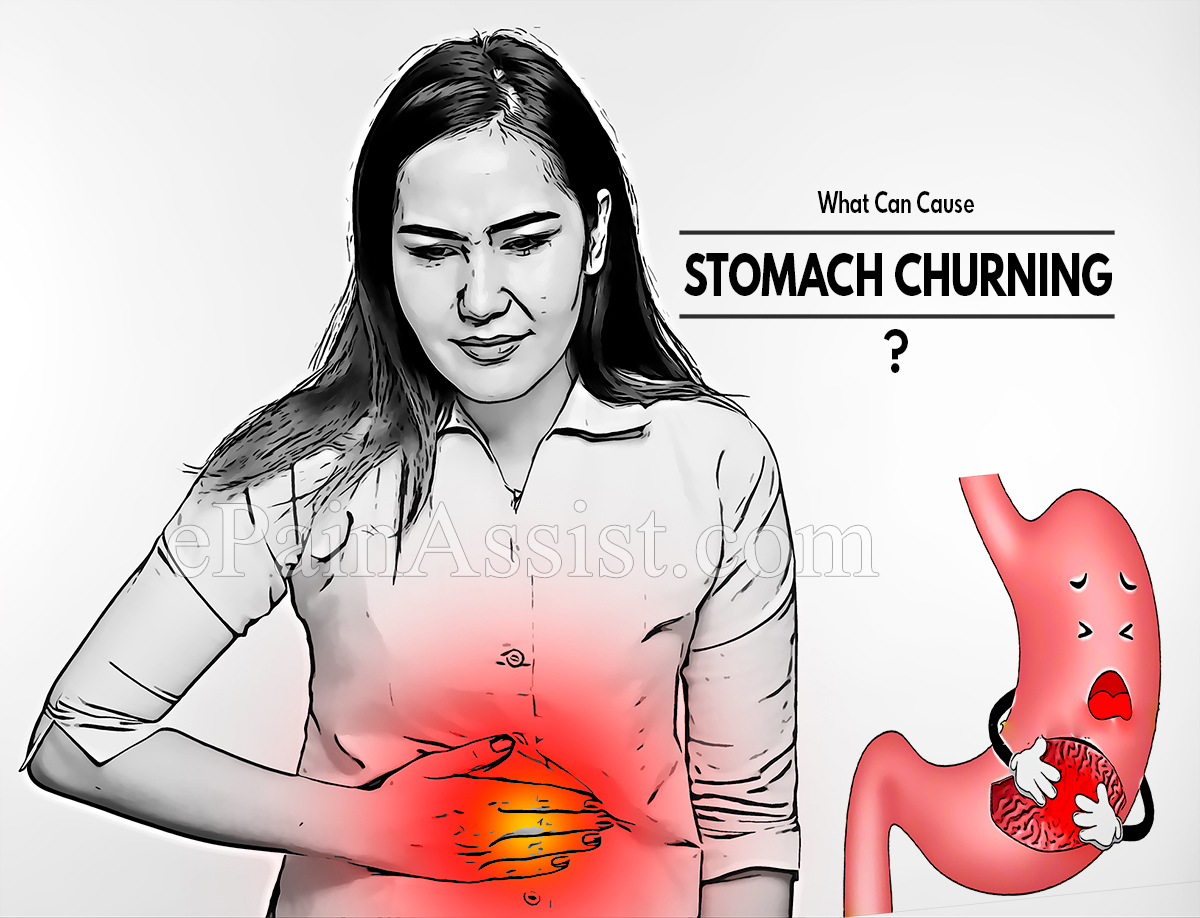What is Stomach Churning?
Stomach churning is an uncomfortable sensation felt in the abdominal region that might occur alongside nausea to any other digestive symptoms. It is a temporary symptom but sometimes may indicate an underlying condition.
Stomach churning leads to:
- Tightness
- Knots
- Gurgling or bubbling sound
- Pain and cramps
It gives a sensation as if the stomach is tied or there are butterflies in the stomach.
There are a variety of conditions that can lead to stomach churning. Some may be less serious while others might need medical attention.

Causes of Stomach Churning
Stomach churning has numerous causes, which include the following:
Indigestion
Indigestion also known as dyspepsia leads to discomfort in the upper abdominal region. The symptoms of dyspepsia are:(1)
- Nausea
- Vomiting
- Bloating
- Churning or gurgling in the stomach
- Belching
- Burning sensation in the food pipe
- Feeling of fullness
A person can suffer from dyspepsia after eating spicy or greasy food, smoking, stress, and drinking excess caffeinated beverages. Recurrent dyspepsia can be due to underlying medical conditions including:
- Heartburn
- Gastritis
- Stomach ulcers
- Lactose intolerance
- Stomach cancer
- Gallbladder inflammation
- Irritable bowel syndrome
- Infection of Helicobacter pylori
Stress and Anxiety
The gut and the brain have the same nerve connection. This is why a person with stress and anxiety may have gastric symptoms as well.
During stress, stress hormones are released by the body. These hormones enter the digestive tract and cause the following symptoms.
- Nausea
- Indigestion
- Diarrhea
- Stomach churning
- Appetite loss
- Peptic ulcers
- Irritable bowel syndrome
- Constipation
Premenstrual Syndrome
Many people feel a range of symptoms a week before menses. These are known as premenstrual symptoms. According to the American College of Obstetrician and Gynecology, the common symptoms include:(2)
- Bloating
- Abdominal cramps
- Gastrointestinal symptoms including diarrhea and constipation
The exact cause of the premenstrual symptom is unclear but it is thought to occur due to changes in hormones during the menstrual cycle.
Pregnancy
Digestive issues occur during pregnancy due to hormonal imbalance.(3) In later stages of pregnancy, the growing size of the fetus and womb can put pressure on the abdominal cavity.
The digestive problems that occur due to pregnancy include:
- Diarrhea
- Bloating
- Constipation
- Heartburn and acid reflux
- Nausea and vomiting
Food Poisoning
Food poisoning occurs when a person consumes contaminated food and drinks. The most common causes of food poisoning are harmful viruses and bacteria.(4)
Anyone can get food poisoning. The symptoms range from mild to severe and can take several hours even days to show up after consumption of contaminated food.
The common symptoms of food poisoning include:
- Vomiting
- Indigestion
- Abdominal cramps or a feeling like stomach churning
- Diarrhea that may be bloody
- Fever
If someone has a high fever or very high temperature along with dehydration, or blood in stool, should consult a doctor.
Viral Gastroenteritis
Viral gastroenteritis or stomach flu is a viral infection of the intestine. Norovirus is the most common cause of gastroenteritis in adults and rotavirus is the most common cause of gastroenteritis in children.(5, 6)
The symptoms of gastroenteritis include:
- Stomach churning
- Vomiting
- Watery diarrhea
- Nausea
- Fever
A person may experience dehydration due to excessive diarrhea and vomiting and as soon as the signs of dehydration are noticed, prompt medical help should be taken.
Lactose Intolerance
Stomach churning can sometimes be due to food intolerance such as lactose intolerance. People with lactose intolerance may experience digestive symptoms on consuming anything containing lactose.
The symptoms of lactose intolerance include:
- Nausea and vomiting
- Growling and rumbling in the stomach
- Bloating and gas
- Abdominal pain and cramping
Medications
There are a few medications that may lead to digestive symptoms including stomach churning. These include laxatives, certain antibiotics, and nonsteroidal anti-inflammatories.
Treatment of Stomach Churning
A person should speak with a doctor if they experience stomach churning frequently or if this symptom does not improve.
The treatment for stomach churning may involve treating the underlying condition. There are a few lifestyle changes that can be adopted by people to prevent or alleviate stomach churning, these include:
- Managing stress
- Avoiding food that triggers symptoms
- Reducing caffeine intake
- Practicing good food hygiene
- Consuming ginger as it protects against digestive symptoms
- Taking probiotics
- Taking antacids
Stomach churning is a symptom of many conditions. It can lead to temporary discomfort. A person experiencing this symptom frequently should see a doctor to know the cause and get treated for it.
